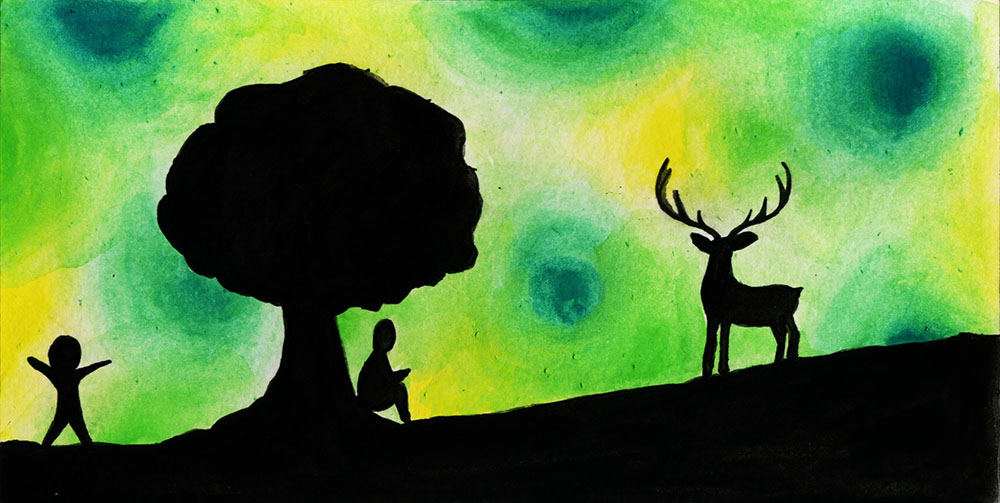Body
The organized physical substance of an animal or plant either living or dead, fullness and richness of flavor (as of wine), a mass of matter distinct from other masses (a body of water).
Merriam-Webster
I’ve thought a lot about my legs. I pinched the cottage cheesy bulge that oozed out from my shorts on sticky summer evenings when I sat on the pews in my childhood Baptist church sanctuary. I watched my legs swell during pregnancy. I flexed in front of the mirror when I became a runner and double-checked race photos to stare at my muscle definition. I’m slightly knock-kneed and the fourth toe of my right foot is slowly curling beneath my third toe. If I live to 90, they might meld together.
I’ve thought a lot about my nose. It is big and straight with a slight hook on the end. It is my maternal grandfather’s nose. I’ve picked it, pierced it twice, and broken it once. I needed surgery to fix the break and asked the doctor if, while in there, he could give me a cute little upturn at the end or maybe decrease the overall size. He laughed and put me under. I woke with two black eyes and a cast. Yes, a cast on my face. In high school. My friends in Djibouti tell me I have a beautiful, Arab nose, and this is one of my favorite things about being an expatriate. Not the appreciation for what I considered my worst feature, but the way culture offers fresh perspectives. Now that my grandfather has died, I’m thankful the doctor didn’t change my nose. I see my grandfather every time I look in the mirror.
I’ve thought a lot about my hair. Curly and blond. Perfect in the 1980s when I merely had to run a round brush through my bangs and voila, the frizzy poof my sisters spent hours trying to achieve. Not so perfect when I lived in Somalia and my hair was too slippery to hold a headscarf in place. When the scarf slipped, my curls sprang out, unruly and bold. My hair is neither perfect nor imperfect for Djibouti, next door to Somalia and where I live now. I’ve learned how to tie it up and I’ve learned to be comfortable with it flowing down. The trouble with hair in Djibouti is that mine falls out in handfuls, from the salty water in the shower, from the stress, from the extreme temperatures, constant sweat and sun, and from cancer.
I’ve thought about my breasts. I tried to hide them, tried to accentuate them, used them to feed children, wondered if they will eventually develop cancer and kill me. I was wrong about my breasts. It was my thyroid that got the cancer. It hasn’t killed me, yet.
The body as I saw it, called into question the premise I was raised to believe; that God saw what he had created and called it very good.
The body is weak, prone to breakdown and damage. It is vulnerable. It smells weird and makes awkward noises and doesn’t always look the way I want it to in skinny jeans, or any jeans. The body is infinitely varied among humans and all of us have hair and moles, sometimes hairy moles. We have crooked teeth and lopsided earlobes and butts that sag, jiggle, or form shelves behind us. Is this breakable vessel truly something sacred? Can this thing, capable of murder, theft, lying, abuse, lust, greed, pride, and cruelty be good?
There are other body parts I never gave much thought to until I lived in the Horn of Africa. Parts I earned, ignored, damaged, lost, and neglected. Parts I couldn’t imagine having a role in the deep, creative, beautiful goodness of being human.
But life here, in community with Muslim friends, in the steamy desert, in a world upside down from the world of my Baptist churched childhood, changed the way I look at and think about my body parts. It changed the way I thought about goodness, about the intricate handiwork implicit in the way we live and move and have our being.
Hemorrhoids
An abnormal mass of dilated and engorged blood vessels in swollen tissue that occurs internally in the anal canal or externally around the anus, that may be marked by bleeding, pain, or itching.
Merriam-Webster
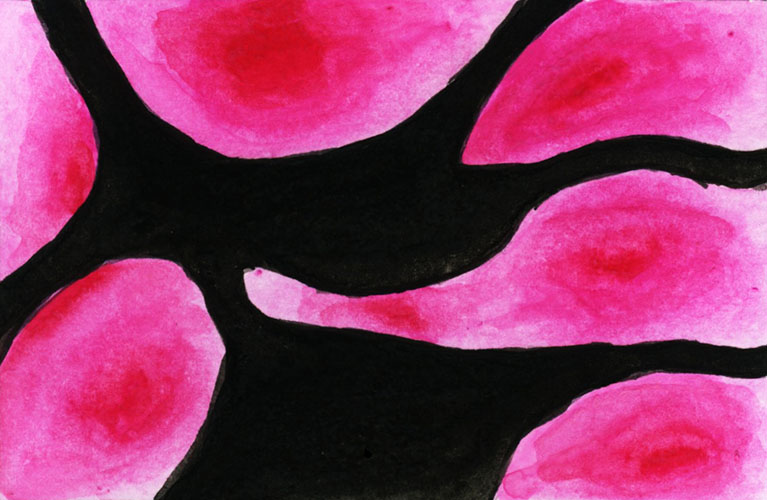
I delivered my first child vaginally, no pain medication. We labored together for four hours and I expelled her in less than 45 minutes of pushing. She gave me the gift of motherhood and of hemorrhoids. Her twin brother refused to come out and so 47 minutes later, he was born via emergency cesarean section. He gave me the gift of motherhood x two and a scar and the skin flap that hangs over it, where all that stretched out twin pregnancy skin still dangles, 19 years later. When people say, “Twins! Two for one, lucky you,” I’m tempted to show them my scar and my hemorrhoids. Two for one, lucky me! But of course, I don’t. I’m tempted to at least mention these irreversible changes to my body, but of course, I don’t. How undignified.
I still have the hemorrhoids. I brought them, along with the scar and the stretch marks and the two babies, to the Horn of Africa when we moved to Somalia in 2003, and then Djibouti. Life here exacerbates them in ways I never anticipated.
Diarrhea, more or less a constant we learn to control and workaround is no friend of hemorrhoids. This means I sometimes endure the sensation that a flaming fire poker has been shoved up my anus. Squatty potties are also no friend to women with hemorrhoids. We don’t have a squatty in our current house but between road trips, beach trips, camping trips, and visits to friends’ houses, I squat on a regular basis. I have mastered the art of not peeing on my clothing or feet. But I have not mastered the art of holding in the hemorrhoids while squatting. The angle of the squat and the strength, or weakness, of my leg muscles, means sometimes I come away from the squatty potty experience with a fresh awareness of what it means to be a biological mother.
There are creams, salves, and suppositories available to soothe my pain. But I’ve learned from my Somali friends that there is another option. I could call the midwife. The midwife is useful for all manner of body part removals. When it comes to hemorrhoids, she might employ an actual burning fire poker. She might also employ her extra-long pinkie fingernail. One quick swipe and no more hemorrhoids. I have not yet suffered enough to make this call.
In a twisted way, I’m proud of my hemorrhoids. I despise them, but I earned them. My son’s lack of cooperation during birth left me with this belly scar, this story of two births in one day. And though I wouldn’t choose it and don’t recommend it, thank you, son, for giving me this story and this scar and this life of infinite awe at the man you have become. Thank you, daughter, for giving me this pain, these new body parts. I am endlessly curious about both of these children and watch them with delight. Outside my body, permanently imprinted on my body.
Adenoids, Tonsils, and Uvula
Adenoid: Either of two abnormally enlarged masses of lymphoid tissue at the back of the pharynx that usually obstruct the nasal and ear passages.
Merriam-Webster
Tonsil: either of a pair of prominent masses of lymphoid tissue that lie one on each side of the throat between two folds of soft tissue that bound the fauces
Merriam-Webster
Uvula: the pendent of fleshy lobe in the middle of the posterior or border of the soft palate
Merriam-Webster
My daughter, the one who gave me hemorrhoids, no longer has her adenoids or her tonsils. In Minnesota one summer, the doctor looked into her throat and expressed surprise that she could swallow anything, they were so massive. We scheduled surgery. She came home with a Beanie Baby gift from the hospital, a mylar helium balloon, serious pain medications, and clear instructions for how to eat and recover. She spent the next week on the couch in her grandparents’ living room, watching Anne of Green Gables, reading The Hunger Games, and sipping melted ice cream, watery pudding, and juice popsicles. Her major source of suffering was the pain in her throat and that her brother went on a canoe trip to northern Minnesota without her.
I still have my adenoids and tonsils but when she cried or vomited from the medicine and pain, I felt twinges in my throat. Phantom pain. Little devils, dancing between her pain and my love on a line never quite severed, like our umbilical cord. Many of my Somali friends no longer have their adenoids or tonsils either and when I or one of my other two children, get a cold and have swollen glands, they suggest I call the midwife. We still have not suffered enough to make this call.
She would come, again with her long pinkie fingernail. The person with the offending glands lays their head in her lap, face up. She squeezes their face between her knees, sometimes a family member, often the mother, assists, holding hands out of the way. The midwife forces open the mouth and with one, two, three quick swipes, the adenoids, tonsils, and sometimes the uvula, are gone.
I never thought much about tonsils or adenoids but when I do now, I credit my healthy constitution as reason enough for their ongoing presence in my throat. Eula Biss writes:
‘Is the immune system at the heart of a new incarnation of social Darwinism that allows people of different ‘quality’ to be distinguished from each other?’ asks the anthropologist Emily Martin. She believes the answer may be yes. Some of the people in her study expressed what she calls ‘immune machismo,’ saying, for instance, that their immune systems ‘kick ass.’”
This is naivete and arrogance and I used to be guilty of both, thinking my immune system kicked ass. I do not know why my glands have stayed their proper size and why my daughter’s expanded to the point of needing to be removed. I do not know why she, and I, were born in a country where we use doctors and medicine instead of fingernails, where we come home with Beanie Babies and balloons instead of hemorrhages and infections. I have learned I certainly cannot credit myself. These are not accomplishments, they are simply the parts that comprise my body.
Thyroid
A two-lobed endocrine gland located at the base of the neck and producing thyroxin which regulates growth and metabolism.
Merriam-Webster
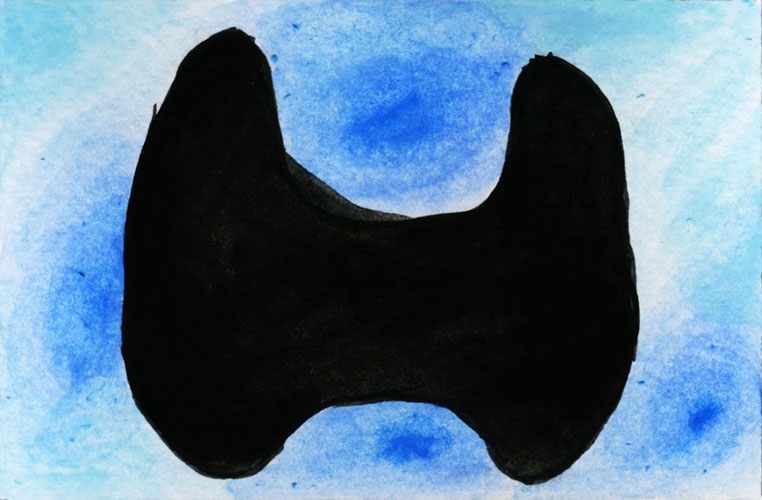
I lost that naivete and arrogance when my doctor found a massive lump in my neck. She ordered an ultrasound and a biopsy and said, “Schedule them quickly.” Turned out my immune system didn’t kick as much ass as I’d expected. A cancerous tumor had taken up residence in my thyroid, an organ I barely registered. Turns out the thyroid is pretty important as a regulatory organ. From metabolism to body temperature to sleep, hair, skin, energy, mood, brain clarity. The little butterfly works hard and I was about to kill mine with a thyroidectomy.
Die, cancer! Which meant die, thyroid. Which means going on daily medication for the rest of my life, hoping a little pill could replace what disease had stolen. I also took a radioactive iodine pill that rendered me radioactive and a danger to society and I had to go into isolation. I did not grow a tail or gain the ability to fly, which would have added interesting body parts to write about. I did receive a card that said Rachel Jones has undergone nuclear medical treatment, which I could hand to TSA employees at the airport should I set off metal detectors with my body.
I asked my surgeon if I could have the thyroid. He said no. He did agree to take a photo and while I was under anesthesia, he placed it on my neck and snapped a picture.
I wasn’t in Djibouti while undergoing surgery or isolation. Djibouti doesn’t have the quality of medical care I needed or really much in terms of quality medical care. If people get cancer, the doctor might not ever tell them. Why tell someone they have a disease that can’t be treated? If they are wealthy enough and have the right papers, they leave the country for Europe or North America. They might come back but they hope to leave their disease, or infected body parts, behind.
This made me thankful for the access I have. This made me feel guilty for accessing what others can’t. I still don’t know how to reconcile this, other than to help those I can access what they can. Taking a refugee to the tuberculosis testing center. Paying for a friend’s prenatal vitamins. Making a phone call to a specialist my neighbor can’t communicate with in English.
Lymph Nodes
A roundish body of lymphoid tissue that provides lymphocytes to the heart and blood vessels and purifies the lymph.
Merriam-Webster
My cancer didn’t stay in the thyroid and the radioactive iodine didn’t kill it all. It quietly and quickly shifted, to stay alive, and made a home in the lymph nodes of my neck. It is still there, waiting, lurking, disrupting my life in Djibouti. I have to fly to the US every few months for tests, to ensure we respond quickly when it does decide to make its move and become more aggressive.
I have friends praying for me on all sides of the globe. This means 24-hour prayer, in multiple languages, rising from the hearts of people committed to a variety of religious systems. Cancer in my neck had reminded me of community. I am sick. And I am loved. That needs to be enough for me, and most days, it is.
Skin
The external limiting tissue layer of an animal body.
Merriam-Webster
Scars on my body map out my life. There is the c-section scar. The squiggle on my knee from a fourth-grade four-square game. The ankle bracelet scar from a dog chain. The notches up my shins from scrambling into a coral-ridden boat after swimming with whale sharks. Stretch marks on my thighs, hips, breasts, stomach. Runner’s tattoos, my word for the scars left by chafing sports bras and water backpacks. A thyroidectomy scar across the base of my neck. All of my scars are either accidental, badges of pride, or hard-earned by a life of adventure and sport and breathing.
The skin I’m in has always been my own and I failed to appreciate this until I watched it stretch and bulge and split when I was pregnant with twins. Still, I had chosen this, to bear children.
My Somali friends describe to me how their skin is like a porous tent, a shield, and a window. When a disease enters, it can be drawn out through burning. Fire and sickness can’t exist in the same place, says a Somali proverb. Mothers or religious leaders spin rounded-tip sticks against wooden boards until they smoke, then they press the tip of the stick against the skin of a feverish child in specific patterns. Along the ribcage, the collarbone, the spine.
A severe stomachache or a cyst can be drawn out using a coin. The religious leader drops the coin into a fire and when it is hot enough, he places the coin on the stomach of the sick person and covers it with a clear teacup, forming suction and pulling out the offense, which could be a disease or could be a jinn, a mischievous devil. He might pray or quote verses from the Quran.
Their bodies are maps, too, maps of disease and motherly concern and the intimate connection between the body and faith, ritual and spiritual practice. The skin they are in is evidence of communal life and the opacity between the physical and spiritual realms. They do not see their bodies in the same, autonomous way I do. Nor do they see them in the same cold and sheltered way I do. Their bodies are communal, and they are vessels.
I grew up hearing that the body is a temple of the Holy Spirit, that when a person believes in Jesus, the Holy Spirit will fill her. I’ve always, as long as I can remember, professed to believe this. So why did it surprise me to hear my Somali friends believe something similar? To hear they, too, could welcome a spirit and expel a spirit?
Perhaps I didn’t really believe the body was a temple. But no, that wasn’t right. I do believe it, and I believe it even more strongly after seeing the burn scars on my friends. Body, spirit, health, and strength are interwoven in ways I cannot see or understand. Skin is the boundary of this temple, the shoreline where water meets sand, where soul meets flesh.
Umbilical Cord
A cord rising from the navel that connects the fetus with the placenta and through which respiratory gases, nutrients, and wastes pass.
Merriam-Webster
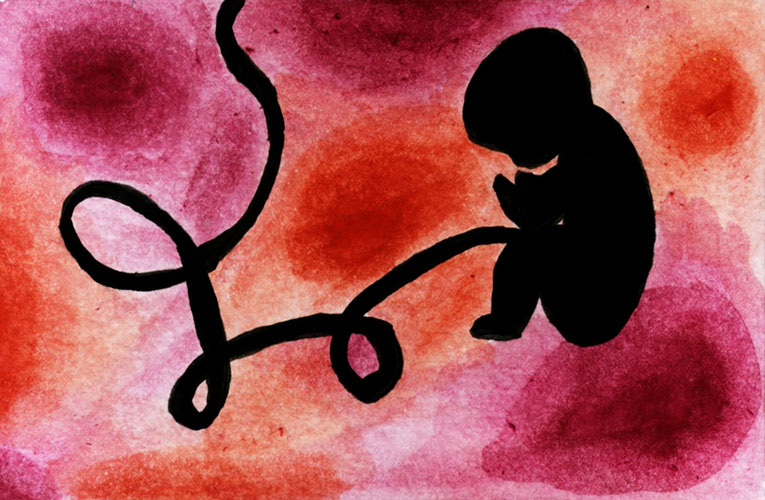
I don’t know what happened to my umbilical cord, the one I was born with. I don’t know what happened to the ones that attached me to my three children. I have a single, foggy memory of seeing one, after birth. In Djibouti when I delivered my youngest, the midwife plunked my placenta, with the cord attached, into a plastic bag on the countertop while she stitched my minor tears.
My husband cut two of the three children’s cords. He wasn’t allowed to cut our son’s, born via surgery. I have never asked him what this felt like. I never even considered asking him, until this moment, this writing. Was it meaningful? Was it a relief? Terrifying? Powerful? Was he afraid he would do it wrong? Did he wonder if it hurt either me or the baby? This snaking cord that carried life from my body to the baby was now his to sever. Was it revolting? An act of violence, made in love, the first slice of a separation that would only increase over the next 18 years.
Most of my Somali friends don’t know where their umbilical cords are either, but some know. Some remember which acacia tree guards their cord. Others know exactly which goat’s neck the cord was tied to. Buried to keep spirits from sneaking into the baby’s belly through the cord. Attached to a mother goat, the goat and her progeny, a gift for starting the baby’s own flock one day. One woman told me she believed her children would go where their cord went. She asked if she could please wrap her next umbilical cord in a piece of cloth after it dried, of course, she added. She wanted to slip it into my purse when I traveled to Minnesota. The baby would follow, decades later, drawn to its cord. In a mysterious way, drawn to its mother.
Is an umbilical cord a body part? It exists for nine months, then shrivels and dies, no longer useful. Is use what determines whether or not a thing is a body part? What about placentas? Ovaries after a hysterectomy? Eyes, after cataracts? A foot, after polio? A thyroid after cancer? An arm after a wartime IUD? It seems self-evident to call ovaries, eyes, feet, thyroids, and arms body parts. But these objects that belong only to pregnancy, that are useful only for giving life, without which there would be no life, what are they?
In my birth experiences, they are garbage. Thank you for your function, now into the hazardous wastebasket. For my Somali friends, the parts are sacred, prophetic, honored. They wrap them, dry them, bury them, or gift them. I can’t help but wonder to whom my mother gave our shared umbilical cord. I have seen the world.
Clitoris
A small erectile female organ located within the anterior junction of the labia minora that develops from the same embryonic mass of tissue as the penis and is responsive to sexual stimulation.
Merriam-Webster
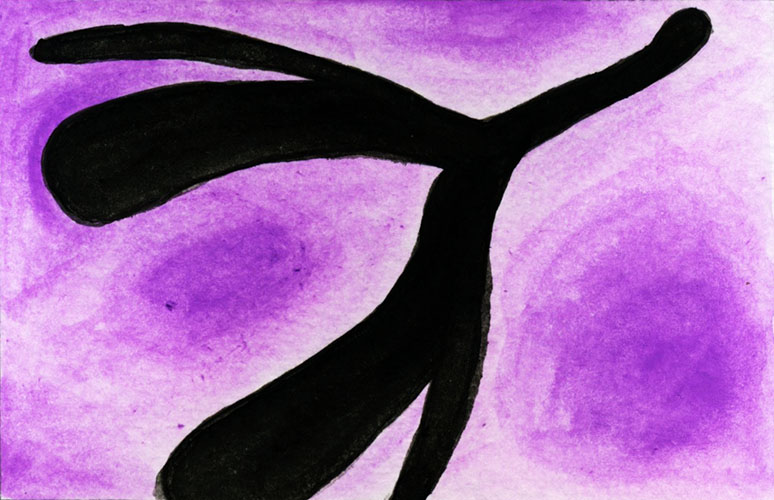
I have a clitoris. In Somalia, I had one of the only adult clitorises in the country. Girls used to shout out, “Kinterleh!” when I walked down our dirt road to the market. Clitoris-owner, an insult unique to parts of the world where female genital cutting is commonplace. Even in Djibouti, where Female Genital Cutting (FGC) is technically against the law, the practice continues, though its popularity is shrinking. Many Djiboutians hope that within a generation or two, FGC will no longer exist in the country. But until then, some viewed me as one of the few wet, smelly women with, some people thought, a penis between my legs. I know this because they told me.
Friends boasted that their vulvas looked like the underside of their arms, smooth and dry. One friend said she had begged her mother to circumcise her. She was afraid her clitoris would eat all her food and grow until it swung low. For this procedure, her mother called the midwife. She came with tools, not just her pinkie. In rural areas, midwives used razor blades to cut off the clitoris and scrape out the inner and outer labia. They stitched the lips of the vagina together with thorns and bound girls’ legs together, sometimes burying them up to their hips to keep them from moving until the wound sealed tight, leaving a hole the size of a pencil tip for blood and urine. In cities, midwives used knives to cut and used needles and thread to stitch girls together.
Increasingly in Djibouti, due to an anti-FGC campaign, families chose to prick their daughters, rather than slice them. A little blood, that’s all. No removal, no sewing shut. They were now clean, pure, and marriageable.
When I first learned about FGC, I thought about the pain and the blood, the physical act of slicing, scraping, and sewing, and the physical act of forced entry during a girl’s first sexual encounter. This was what my friends talked about, the friend who said she wanted to kill the midwife who cut her and the friend who suffered so much pain every month during menstruation she had to miss work and could only curl into the fetal position on her mattress and cry. I thought about politics and justice, feminism and gender-based violence. These are all issues my friends share with me and try to help me understand.
But they also teach me how FGC communicated less physical lessons. That the sexual desire of a woman was dirty, uncontrollable, and frightening. And that the sexual satisfaction of a woman was unnecessary, disposable. A scrap of flesh literally tossed aside.
And yet.
The clitoris is the physical embodiment of sexual satisfaction. Without it, some say a woman will never experience orgasm. Cut women disagree. If a cut woman finds herself with a partner willing and creative enough, the body doesn’t need the clitoris. A woman can orgasm somewhere else on her body, maybe inside her vagina, maybe not. Women’s desire is not disposable. It is so important and powerful, her body will create its own unique system, the body will create new pathways as it searches for satisfaction to its desire and pleasure.
•
This body is powerful. It is pure. It is the shape I need it to be for living and breathing and loving. This body is wounded and scarred, damaged and used. It is hungry and sexual and aging and creative. It is cancerous and waiting. This body feels sand between toes and orange peels beneath fingernails, it blinks away salty ocean water and bends into gusting August winds. This body is what carries me through the world and through all this body’s parts, I experience the world. I stand with my face tilted to the sun, my arms spread out wide to either side. I close my eyes and smile and I start to spin. We are alive, this body and I. For now, we are alive.
And we are good. •
